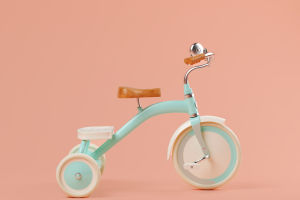A sofa is a significant furniture investment that can last for decades. To ensure a valuable purchase, it is essential to consider key factors like quality, functionality, and design preferences.
This guide helps navigate the process to identify a sofa that perfectly meets your needs.
Is It a Couch or a Sofa?
Understanding the Terminology
In the United States, "couch" and "sofa" are interchangeable terms for an upholstered piece of furniture for sitting. Historically, they differed. "Couch" originates from the French "couche," meaning armless seating, similar to a chaise lounge. "Sofa" derives from the Arabic "soffah," referring to a raised, carpeted platform for sitting.
Repairing or Replacing a Sofa
When to Repair
Sofas endure wear and tear, especially in homes with children or pets. Aging cushions can be restuffed for comfort, reupholstered for a fresh look, or sagging frames repaired to restore functionality.
When to Replace
Dear Lykkers! Replacement may be more practical if the sofa is damaged beyond repair, outdated, or too small. Purchasing a new sofa can also enhance living spaces by providing a central gathering spot.
Key Considerations Before Buying
Space
Before purchasing, measure the room and any entry points to ensure the sofa fits seamlessly. Account for the style and flow of the space to avoid overcrowding. Sofas with detachable legs or removable door hinges can simplify delivery for tight spaces.
Materials
Durability and maintenance are critical, especially with children or pets. Microfibers, textured fabrics, or leather are excellent options for heavy usage. Patterns and stripes should align at seams for a polished look, and higher thread counts ensure longevity.
Frame and Cushion Quality
A solid hardwood frame, preferably kiln-dried, guarantees durability. Cushion stuffing can vary from polyurethane foam to high-resilient foam or luxurious down blends, depending on comfort preferences.
Size and Proportions
The sofa should complement the room's scale, occupying about two-thirds of the wall it sits against. Depth and back support should suit individual height and comfort needs.
Sofa Features and Types
Features to Look For
Modern sofas come with features like reclining seats, built-in beds, storage compartments, and even charging ports. Prioritize features that enhance daily use.
Types of Sofas
Sectionals: Versatile and ideal for large families or gatherings.
Modular Couches: Customizable for size and shape, great for frequent movers.
Sleeper Sofas: Practical for hosting overnight guests.
Reclining Sofas: Perfect for relaxation and circulation benefits.
Outdoor Sofas: Durable and weather-resistant for convertible spaces.
Futons: Affordable, dual-purpose options for small spaces.
Cost and Budgeting
Price Ranges
Basic sofas range from $700 to $2,500. Futons offer budget-friendly options around $300. High-quality designer sofas can cost several thousand dollars.
Timing Purchases
Furniture sales around Memorial Day, Presidents Day, and Labor Day offer discounts. Black Friday and Cyber Monday also provide opportunities for deals, though delays may occur due to high demand.
Practical Questions to Consider
Usage
Determine the sofa's primary use—everyday activities like relaxing or occasional formal settings—to identify the right features.
Users
Consider the needs of family members. Deeper seating suits taller individuals, while shallow seats benefit those with mobility issues. Households with children or pets may prefer low-to-the-ground options.
Room Aesthetic
The sofa should complement existing colors and patterns. Neutral tones work well for small rooms, while bold colors add a statement in larger spaces.
Mobility
For frequent movers, modular sofas or low-cost options are practical choices.
Where to Shop
In-Person Shopping
Seeing options in person ensures satisfaction with the look and feel before purchasing.
Online Shopping
Online stores provide convenience and broader options, though returns can be more complex.


